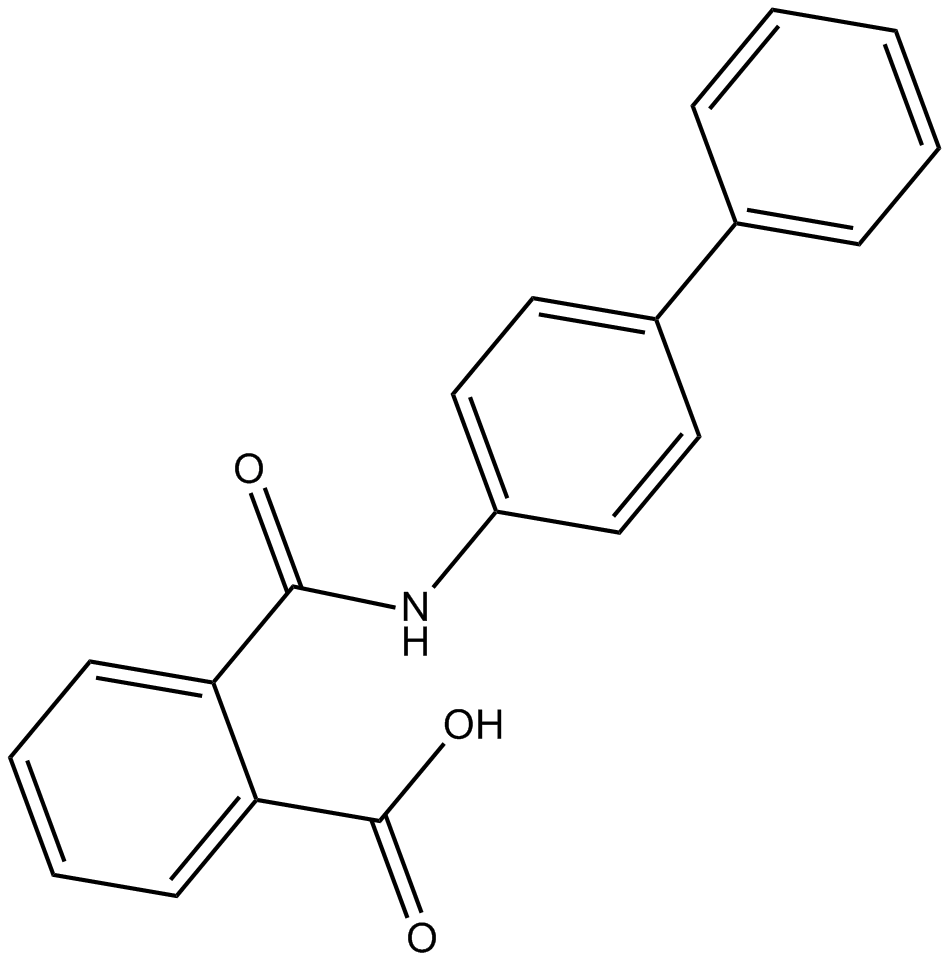Kartogenin |
| Catalog No.GC15057 |
La kartogénine (KGN) est un inducteur de différenciation des cellules souches mésenchymateuses humaines en chondrocytes, avec une CE50 de 100 nM.
Products are for research use only. Not for human use. We do not sell to patients.

Cas No.: 4727-31-5
Sample solution is provided at 25 µL, 10mM.
Kartogenin is a potent inducer that promoting the differentiation of multipotent mesenchymal stem cells (MSCs) into chondrocytes with EC50 value of 100 nM [1].
MSCs are a kind of stem cell that can differentiate into different cell types including chondrocytes, osteoblasts, adipocytes and myocytes.
Kartogenin (KGN) potently induced the differentiation of hMSCs into chondrocytes in a dose-dependent way [1]. In preskeletal mesenchymal cells from mice, KGN stimulated the formations of cartilage nodule and synovial joint, boosted digit cartilaginous anlaga elongation and stimulated interdigit invagination, tendon maturation and interzone compaction. KGN increased the expression of TGFβ1, which stimulated cartilage nodule formation. Also, KGN increased the phosphorylation of Smads that mediated BMP and TGFβ signaling [2].
In the acute surgical model and the chronic joint injury model, kartogenin showed chondroprotective effects. Kartogenin disrupted the interaction of filamin A and the transcription factor core-binding factor β subunit (CBFβ) and regulated the CBFβ-RUNX1 transcriptional, which then induced chondrogenesis [1]. In the dermis of BALB/C mice, KGN induced synthesis of type-I collagen and activated Smad4/smad5 signaling pathway of the TGF-β [3].
References:
[1]. Johnson K, Zhu S, Tremblay MS, et al. A stem cell-based approach to cartilage repair. Science, 2012, 336(6082): 717-721.
[2]. Decker RS, Koyama E, Enomoto-Iwamoto M, et al. Mouse limb skeletal growth and synovial joint development are coordinately enhanced by Kartogenin. Dev Biol, 2014, 395(2): 255-267.
[3]. Wang J, Zhou J, Zhang N, et al. A heterocyclic molecule kartogenin induces collagen synthesis of human dermal fibroblasts by activating the smad4/smad5 pathway. Biochem Biophys Res Commun, 2014, 450(1): 568-574.
Average Rating: 5 (Based on Reviews and 3 reference(s) in Google Scholar.)
GLPBIO products are for RESEARCH USE ONLY. Please make sure your review or question is research based.
Required fields are marked with *




















